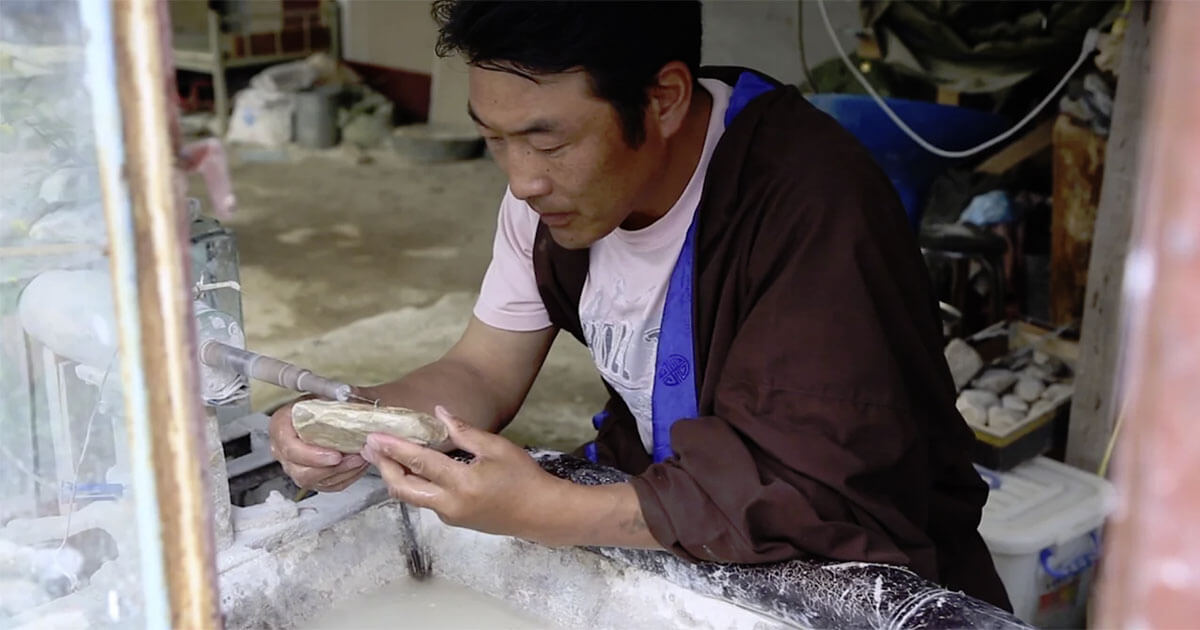When you are traveling in Tibetan areas, it will not take long for you to notice stones carved with prayers. They come in many forms and varieties. Some are carved and painted colorfully; others have only simple indentations. They may have sutras and running scriptures of longer texts, or may contain just one sacred word. Others may have an intricate image. They might be lined up along pathways or a mountain pass, placed in small piles, or stacked as big as a wall. They may be scattered by a shrine or at the head of creek.
In short, mani stones does not only refer to stones carved with the mani prayer, “Om Ma Ni PadMe Hum,” but much more broadly to carved stones of a spiritual nature.

The stones picked for mani carvings are usually ordinary rocks, pebbles, and small boulders. In some cases, prayers or religious images are also carved on huge, immovable boulders, on the sides of rocky mountains, and inside caves. In most cases, people use a hammer and chisel to carve. Depending on the size of the images and width and depth of lines required to create the image, chisel sizes and sharpness vary. Although electric tools might be used occasionally, mani stone carving is primarily handcrafted due to the religious aspect of the practice.







Traditionally, prayer stone carvings are done as a form of religious practice to accumulate positive merit through spreading prayers. Practitioners vary from monks, nuns, nomads, and peasants alike. Village shamans and devout elders may take summer pilgrimages to every creek source in their community to offer prayers, make offerings to delight the spirits of the water, and leave prayer carvings on rocks by the water sources. Traveling monks might seek sacred mountain passes, stone in the temple walls, and religious stone mounds to build upon the existing piles.
However, not all stones on mani stone mounds are carved with prayers or mantras. More often than not, passersby will collect good-looking pebbles from nearby and throw them onto the mound while praying for the well-being of his or her family, community, and all sentient beings. The presence of prayer stone mounds elicit prayers and good thoughts accompanied by pebbles and stones of all sizes and kinds.
Although mani stones were exclusively considered sacred, recently they are also regarded as works of art. As a result, mani stones are often available in souvenir shops and museum gift stores for tourists and art collectors.




